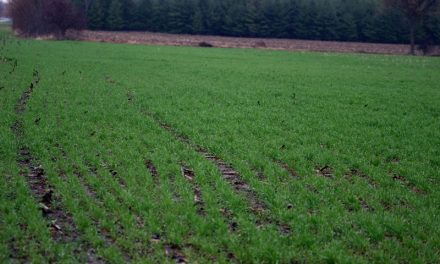One reason scientists are interested in the possibility of life on Mars is to find useful resources for technology and possible colonization of the red planet.
An American researcher from Ohio University claims to have discovered evidence of insect life on Mars after analyzing the NASA-JPL photographs transmitted to Earth from the surface vehicles sent to explore the planet (Curiosity is the latest Mars rover).
Professor emeritus William Romoser, an entomologist, presented his case for Martian life at the annual conference of the Entomological Society of America (Entomology 2019) held Nov. 17-20 in St. Louis, Missouri. Romoser presented evidence of fossil and living insect- and reptile-like forms on Mars. His presentation states: “Three body regions, a single pair of antennae, and six legs are traditionally sufficient to establish identification as “insect” on Earth. These characteristics should likewise be valid to identify an organism on Mars as insect-like.”
Romoser noted that the interpretation of insect- and reptile-like creatures described are tentative and may be changed in the future as knowledge of putative Martian fauna increases with further study. However, in the absence of physical samples of insect- and reptile-like creatures, the interpretation of photos may lead to different things.
On the other hand, if the presence of higher metazoan organisms is confirmed on Mars, that indicates the presence of nutrients, energy sources, and water which form an ecological setting sufficient to sustain life.
Insect farms to feed a future Mars colony
Future Mars explorers will likely have to grow some of their own food, and be much more involved in food preparation than astronauts on the International Space Station (ISS). Astronauts currently get about 1.7 kilograms of food per day. At that rate, astronauts would need more than 3,000 kg of food per person for a five-year round trip to Mars.
“Feeding One Million People on Mars” is the title of a new research study published in the peer-reviewed journal “New Space” last September. The coauthors K. Cannon and D. Britt, University of Central Florida, Orlando, evaluated different food sources and quantitatively modeled the shifting balance between food supplied from Earth and that produced locally on Mars over time. The model is based on a diet composed of plants, insects, and cellular agriculture, which can produce “clean” meat and fish, algae, chicken-less eggs and cow-less milk.
The study takes into account the energy, water, and other systems needed for food production. The researchers discuss the implications of their findings and present recommendations for future research.
Cannon and Britt noted that raising farm animals for dairy and meat would not be practical on Mars because of the challenges of shipping them across space. So, insect farms and lab-grown meat might be a solution. Insect farms provide a lot of calories per unit land while using relatively minor amounts of water and feed.
Health benefits and risks of edible insects
Back on Earth, edible insects provide an important food source, rich in protein; amino acid and fatty acid; micronutrients such as zinc, copper, iron, magnesium, calcium, phosphorus, manganese and selenium; in addition to some vitamins (i.e. vitamins B12, C, A and E).
Potential health risks from wild-harvested edible insects could be associated with contamination by heavy metals, pesticides residues and pathogens. However, the food derived from the farmed edible insects produced for human consumption must meet safety and hygiene standards, just as any other food product available in Canada.
The Canadian Food Inspection Agency has studied the issue of bacterial contamination of farmed insects. It operates a national microbiological program which includes a random selection of domestic and imported products. CFIA published a study report in October 2018, showing the absence of any bacterial contamination with Salmonella species and Escherichia coli in 51 samples of edible insects.
Whether on Earth or Mars, insects are being considered as a food source.












